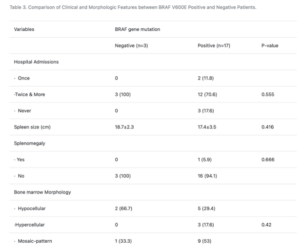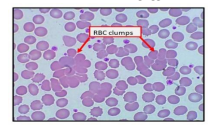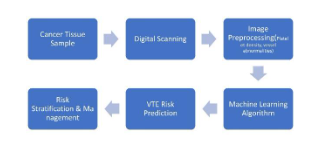Presented in 13th Emirates Pathology, Digital Pathology & Cancer Conference Holiday Inn Dubai, UAE & Virtual
Global Journal of Pathology & Laboratory Medicine
Unified Citation Journals, Pathology 2024, ISSN2754-0952
Poster Presenter Name: Dr. Nasibeh Sargazi Moghadam (Iran)
Mojtaba Karimi1 , Ahmad Monabati2 , Nasibeh Sargazi Moghadam3
1Department of Hematology and Medical Oncology, Shiraz University of Medical Sciences, Shiraz, Iran.
2Department of Pathology, Shiraz University of Medical Sciences, Shiraz, Iran
3Graduated form Shiraz University of Medical Sciences, Shiraz, Iran.
Biography: I am a medical professional with extensive knowledge and skills in cancer research, with a strong background in evidence-based medicine. Currently a research assistant at Shiraz and Mashhad Pathology departments, I have contributed to data collection for case studies and case series, conducted literature reviews, and assisted with scientific writing for research publications. I also have experience as a Pathologist Assistant, Rural Doctor, Research Aide, and Family Physician. I have authored book chapters and publications on the role of oxidative stress and antioxidants in malignancies, vitamin D in inflammatory diseases, and telemedicine in managing patients during the COVID-19 pandemic. I am also involved in ongoing research on various rare cancer case studies.
Objective:
BRAF V600E mutation has several implications in hairy cell leukemia (HCL). The prevalence of This mutation has been investigated in various populations, but not in Iran. In this study, we evaluated the prevalence of BRAF V600E mutation in an Iranian HCL population as well as its association with the patients’ characteristics.
Methods:
In a retrospective (archival) study, 20 HCL patients with the confirmed immunophenotypic and morphologic diagnosis were included. Paraffin-embedded blocks of bone marrow aspirate were used to investigated BRAF V600E mutation using amplification refractory mutation system (ARMS) PCR. Demographic, clinical, laboratory, and immunophenotypic characteristics of patients were extracted from the patients medical profiles.

Figure 1. Evaluation of PCR Products on the Agarose Gel Electrophoresis under UV Light.


Table 3. Comparison of Clinical and Morphologic Features between BRAF V600E Positive and Negative Patients.
Keywords: BRAF V600E mutation, Hairy cell leukemia, Amplification refractory mutation system (ARMS) PCR
Result:
BRAF V600E mutation was present in 17 (85%) HCL patients and absent in three (15%) patients. The mean age of the patients was 44.76 ± 8.69 years in mutation-positive and 62.33 ± 8.69 in mutation-negative patients. This difference was statistically significant (p=0.013). No significant difference was found between the laboratory indices of the mutation-positive and mutation-negative groups. The clinical, morphologic, and immunophenotypic characteristics of the two groups were also statistically comparable.
Conclusion:
BRAF V600E mutation is present in the majority of the Iranian HCL patients and is associated with younger age of presentation.
Tags:
Immunodeficiency States, Immunophenotyping, Molecular Diagnostics & Proteomics, Evolutionary Medicine, Functional Identification & Biomarkers, Hematopoietic & other Malignancies, Anatomical Pathology, Clinical Pathology, Dermato Pathology, Forensic Pathology, Hemato Pathology, Histopathology, Molecular Pathology, Surgical Pathology, Histopathology, Chemical Pathology, Hematopathology, Histopathology, Cytopathology, Forensic Pathology, Dermatopathology, Clinical Biochemistry, Infection Control, Cytokines, Enzymology, Endocrinology, Cellular Lineage, Virology, Rheology, Toxicology, Neuropathology, Diagnostic Pathology, Mesothelial Proliferations, Transfusion medicine, Clinical microbiology, Cytogenetics, Molecular Genetics Pathology, Immunopathology, Veterinary Pathology, Anatomical Pathology, General Pathology
Upcoming Conferences;
- 14th Emirates Pathology, Digital Pathology & Cancer Conference
More Details: https://pathology.universeconferences.com/
Submit your abstract/research papers/case- study here: https://pathology.universeconferences.com/submit-abstract/
Attend as a Speaker/Poster/Delegate In-person kindly register here: https://pathology.universeconferences.com/registration/
Attend as a Speaker/Poster/Delegate virtually kindly register here: https://pathology.universeconferences.com/virtual-registration/ - 12th World Digital Pathology & AI UCGCongress
More Details: https://digitalpathology.ucgconferences.com/
Submit your abstract/research papers/case- study here: https://digitalpathology.ucgconferences.com/submit-abstract/
Attend as a Speaker/Poster/Delegate In-person kindly register here: https://digitalpathology.ucgconferences.com/registration/
Attend as a Speaker/Poster/Delegate virtually kindly register here: https://digitalpathology.ucgconferences.com/online-registration/



